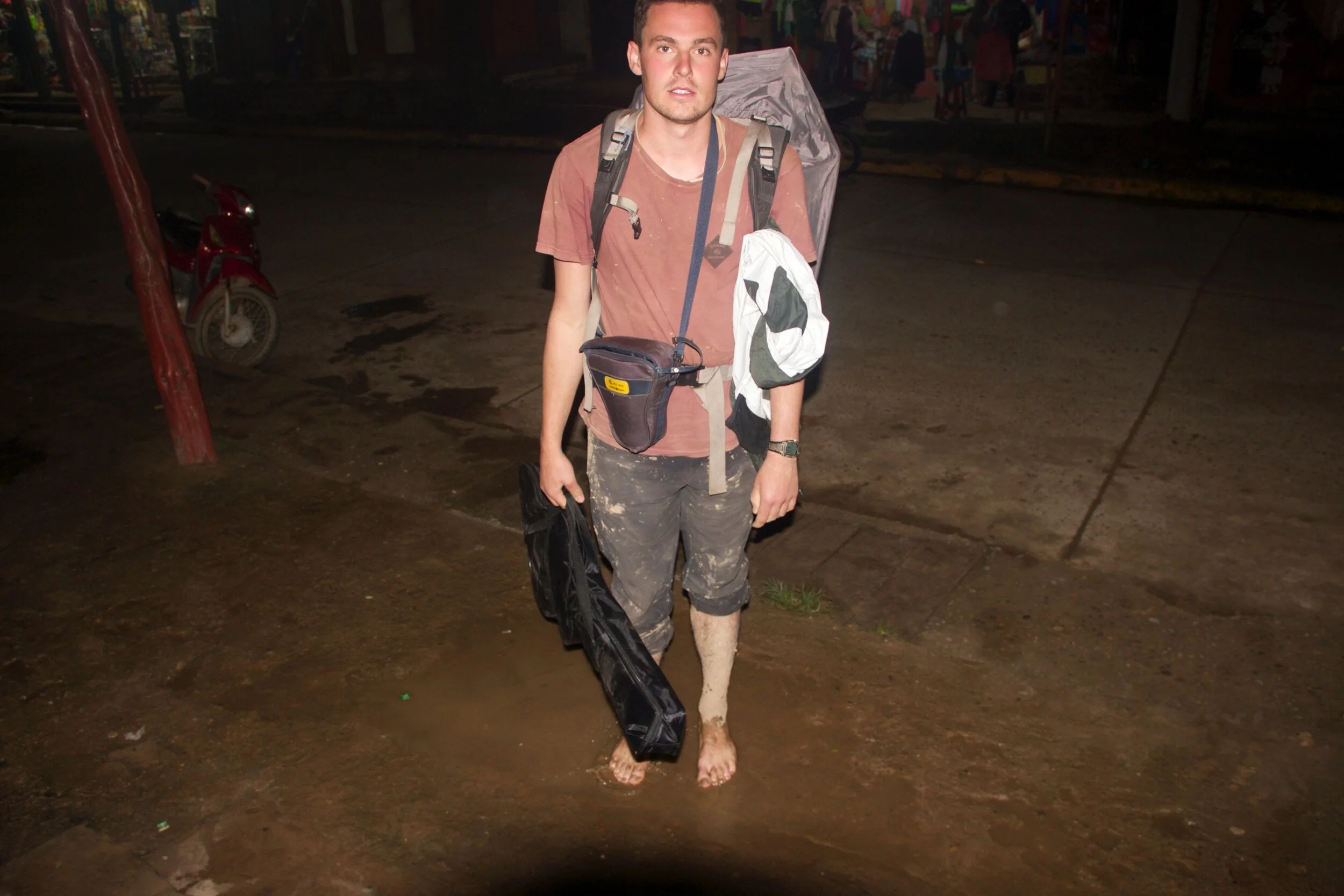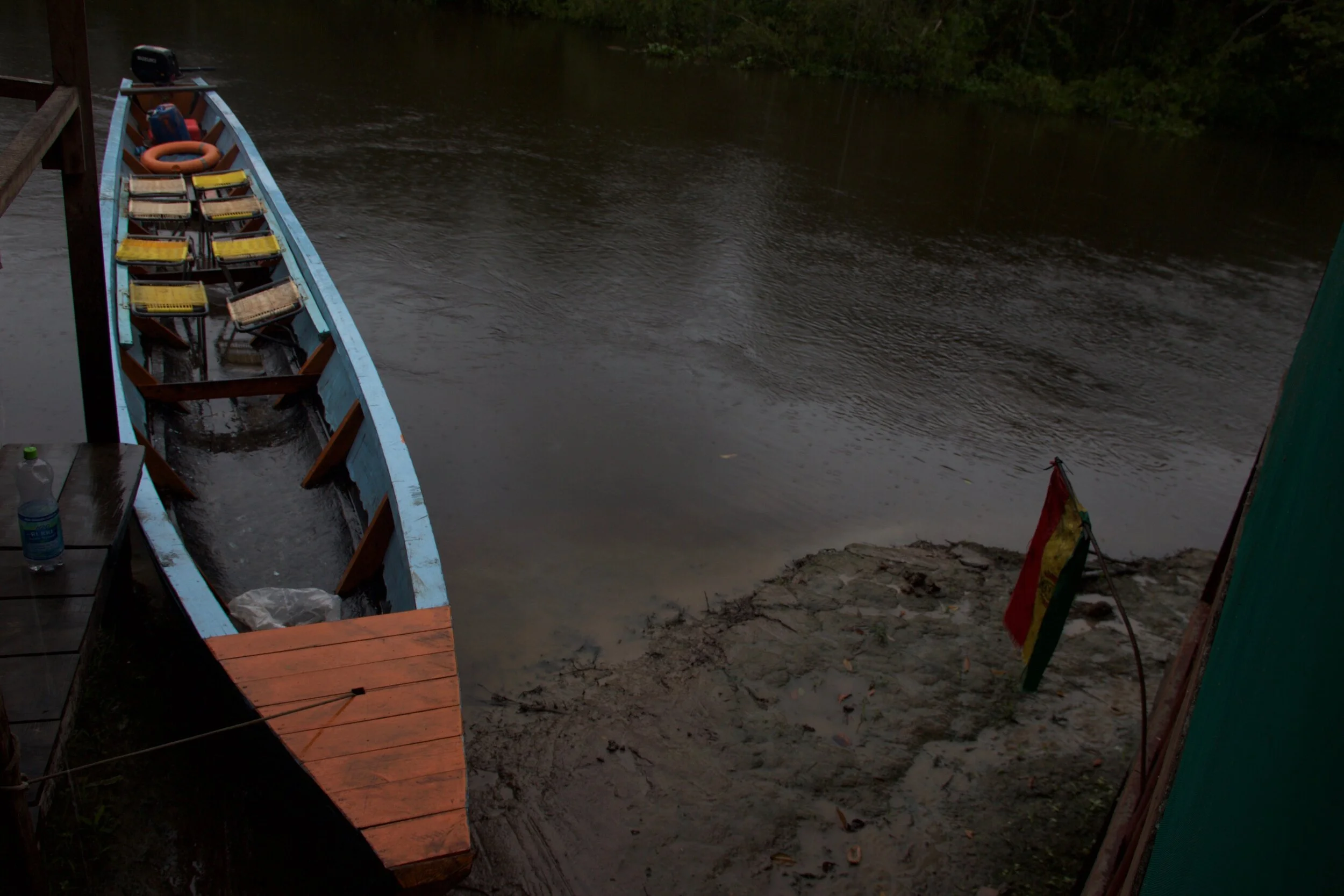My Experience in the Mines of Potosi
As described in another post, taking a mine tour in Potosi, Bolivia is a tricky decision to make. I decided to take the plunge and visit Cerro Ricco one afternoon in 2014. What I saw was disquieting, sobering, and not at all fun. However, it’s an experience I’d suggest any backpacker with an interest in learning, cultural immersion or history to take.
Mine tour in Potosi
(Note: prior to reading this post, go read my other post ‘The ethics of taking a mine tour in Potosi,’ over here)
My tour began at my hostel, Casona Potosi Hostal. After some research on the way, I decided to go with Big Deal Tours - I’d heard that every single employee that works for them is either an ex or current miner, and that they donate part of the proceeds from each tour back to the local guides. My guide, Joey, picked myself and the other tourists up from the hostel by 8:30 am. He sat us all down before the tour commenced to explain the gravity of the experience, the dangers involved and how to be respectful in the mines (introduce yourself to every miner you come across, ask before taking photos, giving out gifts fairly.)
The next step was visiting the local market so as to buy gifts for the miners that we’d be visiting. Joey walked us around the shopfronts, picking out coca leave bags, bottles of aguardiente, cigarettes and sticks of dynamite. While we wandered the shops he told me a little of his life - describing his experience at starting in the mines at age 14. He spoke of the friends that had started with him, his face tightening as he told us of those that had been lost to the mine - either through accidents, pneumonia, or through the respiratory illnesses that take so many miners in this town. The conversation, though morbid, was a sobering reminder of why I was here.
The bus took us up the snaking path up the mountain - locals got on and off as climbed higher and higher up towards the mine. The air, already thin in the city centre gradually felt increasingly difficult to draw breath from. As we arrived at the mine Joey introduced us to several of the men from a collectivo he once worked with - we shook hands and introduced ourselves. I noticed a stream of children gathering about the mine entrance; some playing in the slag, the others hunting for miners in a large pile of ore. I asked one of the miners whether there were any children working in the mine.
‘Not in this hill,’ he said - though looking put off by the question.
We made our way into the mine, the mud sloshed beneath our boots as we clambered into the sullen darkness after the entryway. Joey providing a brief history of the mine as we entered into the darkness - the way in became steep and the mud more cloying. After a while the air began to grow hot and increasingly dusty, I noticed a dry scratchy feeling growing in the back of my throat. Joey had us put on gas masks and flick on our head lamps - the thin light beams illuminating a path downwards. Overhead, wooden pylons and rafters supported the mineshaft, but I could see how aged the wood was; the mine was very old. The way down often twisted and turned, at times we would take a sudden left, to walk through a narrow causeway, or at others, we’d climb up a series of ladders. Joey seemed to know the way. The experience was becoming decidedly disquieting - it was becoming harder to breathe and the way was somewhat arduous. Prior conversations with the miners outside ran through my mind - they spoke of how most of them would be dead by by their fortieth birthday, most expecting to die from silicosis from the rancid air in the mineshaft.
The treacherous pathway down into the mines
After a half hour of walking gradually downhill, clambering between shafts, over unused mine-carts and through low ceilinged tunnels we came to a low ceilinged cavern in the mine. Picks were ringing out in the room, audible over the dull thrum of a petrol-generator. Joey waved for us to follow him in and we entered, greeted by the site of four miners standing near a half-full rail-car of ore and dust. We introduced ourselves to the miners - Juan, Pieter, Keke and Ricki. They ranged in age from Keke, in his late 40’s to Juan, aged 19. They explained the collectivo system to us, I asked them briefly about their lives. They spoke with pride about the mine, speaking passionately about the wages that they received - how work in the mine payed far better than work on a farm or for manual labor in the capital. They spoke about their hopes for their plot in the mountain - that they’d strike more nickel and tin and be able to take on a new hand. Joey pulled out the aguardiente and we all had a drink. It was Saturday in the mines, so we passed around one bottle and then another. I was struck by the quiet dignity of Keke - where was the pity and degradation? As I passed him the bottle of aguardiente I asked him about child miners. He shook his head to that and Joey motioned for me to stop asking. I offered Keke a cigarette. He took one and then took the bag of dynamite I offered.
‘Fill your lungs up to the top with tar,’ he said. ‘That way the tar will get you before the dust.’
Sitting there in the quiet dark of the cavern, surrounded by the cloying cigarette smoke breathed out by the miners, dust in my throat, aguardiente in my gut, I felt a profound sadness and disquietude for the last sentence. I shook hands with them all as we left.
The way out was hard going - the uphill slog through mud and along railway tracks was a tough walk. As we neared the exit Joey pulled us down a side passage, visiting a small antechamber where a large statue sat. Horned, with a startling large concrete phallus stretching from his lap, the demon gazed back at us with blank concrete eyes.
‘El Tio,’ Joey said, gesturing at the statue. He told us what offerings to leave (coca leaves, cigarettes and aguardiente) and we left the tokens by his side. Joey explained why the miners worship the devil - as the lord of the underworld, the devil controls the mines, bringing both protection and destruction to the twisting passageways.
As we left the mine a small boy stopped me and asked me if I wanted to buy some quartz. He thrust the small rock towards me, his other hand holding onto a box of minerals. I bought the quartz off him and then asked what he would be when he grew up.
‘A miner,’ he said.
‘And when will you start?’
‘Next year, I think.’
I left him there, standing by the open hole in the side of the hill, clinging on to his box of quartz and rocks.
My personal recommendation for visitors to Bolivia is to complete a tour in the mines of Potosi. While opinions on this vary (see other post), my argument is that it is impossible for any visitor to have even the most remote understanding of the current plight of the Andean people without experiencing the mines first-hand. No accurate sense of empathy can be developed for the people of Bolivia without understanding and experiencing the mines of Potosi. I would argue that a tour through the mines of Potosi provides the visitor with a chance to see first hand how colonialism has ravaged Latin America - an experience which is significant and necessary for any traveler to do. Whilst tours into the mine are far from perfect, they will provide the visitor an unsettling experience, which will ultimately improve their world-view and sense of empathy.
Planning on visiting Potosi? Read my guide to the town over here.
Been through Cerro Ricco? Let us know about your experience in the comments below!





















Sucre is the best town in Bolivia and here’s why.